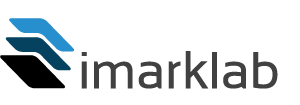Eye Track Behavior 2014: A personal account of the conference
Sponsored by Tobii, Eye Track Behavior is a small size conference dedicated to eye tracking research. Research studies accross the marketing, usability, education and medical fields using eye tracking were presented during a one and half-day conference on Sept. 11-12.
It was fascinating actually to witness how such varied expertises could still share common concerns about pixel, screen and angular spaces for a few days!

Introducing a Solution-Driven Conference
Even though on a much smaller scale, The Tobii conference reminded me of the Measuring Behavior Conference where I presented in 2008, and which takes place yearly in the Netherlands. It is also sponsored by a technology solution provider for behavioral research, Noldus, and the conference goal AND type are similar as the conference targets to bring practitioners and scientific researchers together and to interact in an interdisciplinary fashion around their solutions.
Even though it was clear that each and every speaker had used Tobii devices to conduct their eye tracking research, we only had one “sales speech” per se throughout the entire conference agenda, so as to introduce the new wearable eye tracking Tobii glasses 2.
Directly from the Tobii team, I also enjoyed an informative half workshop -half conference session by Wilkey Wong, Director of Knowledge Services for Tobii Technology, Inc., which was entitled: “Resolving Time and Space: Sampling Rate Considerations and Stimulus Design and Analysis”
The Conference Venue
Taking place in Washington D.C this year, at the House of Sweden near the Potomac river, the 2014 edition of Tobii’s flagship annual conference was located in a central convenient venue in the Georgetown area of the United-States capital.


The Conference Agenda
The agenda featured a total of 12 conference sessions with some very interesting speakers. I enjoyed the consumer retail related talks the most, as the results were often illustrated with very serious data and amusing videos, both at the same time.
Dr Raymond Burke, Professor at the Kelley School of Business (Indiana University), illustrated various drivers of attention, engagement and purchase, showing what caught the consumers’ eyes in a “positive” way, in such as converting the gaze into some arm reaching for the products. As far as cereals are concerned, all I can remember is that even worse than overcluttered shelves, untidy and empty shelves are to be avoided at all times!
Many more point-of-sales comparative case examples of plants and flowers’ price and description positions were also presented by Dr Bridget Behe, Professor of horticulture at Michigan State University. Her studies were showing which combinations of price and description, information and position, could increase the shoppers-into-buyers conversion rate, and results were given, but you had to be there or check her publications.
Other favorited talks were the ones addressing UX and mobile development of course, for which the covered topics and concerns I am very familiar with and much vested in. The UX industry is definitely a major market for eye tracking solution vendors, and even more so, now that the eye tracking equipement itself is more user-friendly and easy to use than ever before!
I particularly enjoyed Dr Soussan Djamabi‘s talk – founder and Director of the User Experience and Decision-Making Research Lab at Worcester Polytechnic Institute – while she would demonstrate “The role of eye tracking in creating business with User Experience design”.
A link to her Powerpoint’s slides was not made available, but below are two recent publications she was involved in and which you may also find very interesting, about optimizing mobile UX interfaces:
The Poster Session
Checking all the posters with the research fellows on Thursday afternoon around 3:00 PM, was another great plus of attending a small ultra specialized conference with about a 100 people. Everyone actively participated in the poster activity at the Eye Track Behavior 2014, which is seldom the case.
Describing the study and the results at this poster session for Poster #5: “Advertising efficiency in a newspaper mobile app: an exploratory study based on eye tracking measures” (Mekki-Berrada, A.; Prom Tep, S.; Sénécal, S; Gohier, V. & Courtemanche, F.); was very informative, as I got to interact with interested and interesting people – challenging you with all kinds of questions!
Our poster did not win the Best Poster price gold medal, but we still made it to the podium with the bronze position!

Some Conclusive Remarks
At midday on Friday Sept. 12, wrap-up remarks by Barbara Barclay, General Manager for Tobii Technology, really got my attention as she was featuring the new Tobii eye tracking wearable glasses 2 – which closely match the look and style of sports sunglasses. The fact that consumers can now wear eye tracking glasses which would look like regular ones, can tremendously increase their comfort and willingness to participate in such studies on a regular basis.
Hence, as eye tracking technology goes through a very rapid consumerization, it is certainly not yet equalled by the research expertise required to properly conduct and benefit from the gigantic research potential it offers accross fields.
And with the new generation of built-in eye trackers which will soon come as basic features along with the webcam on your notebook, consumer research will enter a new era of both scientific innovations with new research protocols and methods, alongside with commoditized research products/services.


